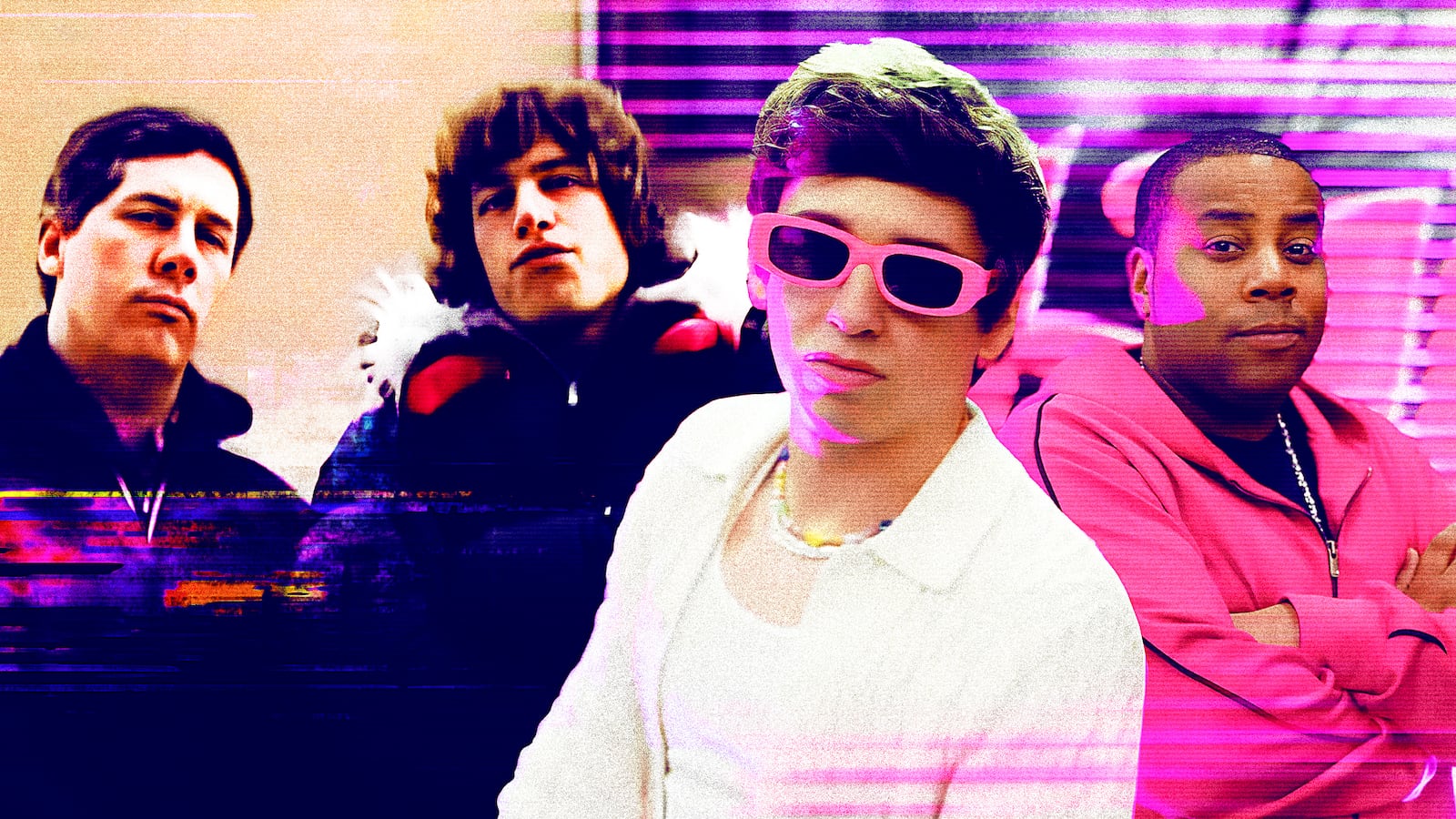Everyone inside of 30 Rockefeller Plaza is overdosing on nostalgia as Saturday Night Live turns 50.
But then again, a lot of us might feel nostalgic over the big birthday, because it reminds us that the show we grew up with and loved is today somehow the same—and yet completely unrecognizable at the same time. How can that be?
One of the prevailing sentiments about SNL is that your favorite cast is the one that performed on the show when you were a teenager. For Gen-X and millennial fans in particular, this makes a lot of sense—your teen years likely saw you permitted to stay up late on a Saturday night, but also without permission (or wheels) to be anywhere but home in front of the TV. And these generations could only watch Saturday Night Live when it was actually live on NBC (unless we were nerdy enough to tape it on VHS).
That all began to change 20 years ago. The SNL of 2005 and the SNL of 2025 may both have Lorne Michaels at the helm, Steve Higgins as lead producer and Kenan Thompson in the cast, but as technology has changed pop culture, and vice versa, so much of the show has changed along with it.
Picture a world without video on demand. You’re imagining life before 2005. While TiVo was both a word and a product in 2004, roughly only 1.5 million households owned one. But the number of Americans with DVRs had more than doubled to close to 5 million by the end of 2005, escalating rapidly in the years that followed.
Even more pivotal, though: YouTube, founded Feb. 14, 2005, which birthed SNL’s first viral sketch with “Lazy Sunday,” rapped in the ninth episode of Season 31 that December. The Lonely Island “digital short,” featuring Chris Parnell and Andy Samberg, gained millions of YouTube views before NBCUniversal shut it down in February for copyright violations—SNL hadn’t then established its own YouTube presence.
(Believe it or not, SNL’s official YouTube channel only launched in 2013.)
The key to comedy is timing. The Lonely Island trio’s short films had won them a gig writing for the 2005 MTV Movie Awards, which just happened to be hosted that year by Jimmy Fallon. Fallon suggested they audition for SNL, at just the right place and at the right time to capitalize on the massive shifts in online video consumption.
Short films had been an SNL staple from the show’s beginning—think Albert Brooks, the animated Mr. Bill, and even the “Fish Heads” music video all the way through “Deep Thoughts with Jack Handey” and Robert Smigel’s “TV Funhouse”—and plenty of fake TV ads in between.
But the success of “Lazy Sunday” underscored just how fundamentally different SNL’s relationship with its audience could become. Fans and casual viewers alike suddenly could approach the show one sketch at a time, online, whenever they chose.
Slowly but surely, SNL episodes after 2005 began featuring more pre-taped bits, which not only became more cinematic in scope, but also could take advantage of the traction that social media was beginning to provide. Comedic music videos became more common. As legendary as the old fake ads such as “Colon Blow” or “Happy Fun Ball” may still be, they didn’t have the vitality of a song hook to rocket through online discourse.

The late 2000s also saw a sea-change in how musical performances looked on the show. Rather than simple sets on the SNL stage, singers and bands started adding elaborate theatrics and grandeur to their mini-concerts.
Speaking of SNL’s legendary fake ads: Where are they now? For decades, these spots for fake products would air immediately after the host’s monologue. But no more. Especially since 2014, when NBC struck deals with advertisers to incorporate cast members into sponsored commercial segments, the fake ads disappeared, mostly replaced with parodies featuring actual brands and products. You’re much more likely in 2025 to see a current SNL cast member in a real TV commercial (Heidi Gardner for Homes.com or Marcello Hernandez and Thompson for T-Mobile, for just two examples).
You cannot fault the current cast for trying to cash in on these side gigs. Since 2008, when Michaels convinced Tina Fey to return and portray Sarah Palin, they’ve seen their own screen time diminish significantly, collectively ceding many of the juiciest impersonation roles to celebrity cameos.
It’s almost a surprise now to see a cast member get to play a prominent politician in 2025. Congrats/apologies to Bowen Yang for “getting” to portray Vice President J.D. Vance, then.
The other big change since 2005 found Michaels moving away from making motion pictures based on SNL characters—whether you loved or hated MacGruber, there hasn’t been an SNL-based film since—and becoming a TV mogul through his Broadway Video studio.
That really all began after 2005, when Michaels and Broadway Video backed Fey’s idea to create the first and more successful of the two SNL-inspired network series that debuted in the fall of 2006—Emmys and kudos to 30 Rock, and apologies to Studio 60 on the Sunset Strip.
30 Rock’s reputation allowed Michaels to approve other cast members’ pitches to make their own TV shows, without even needing to leave the show to do so. (Among them: Portlandia, Shrill, Bust Down, Schmigadoon!, Los Espookys and Kenan.) And within the actual 30 Rock, Michaels would take over all of late-night programming, bringing The Tonight Show Starring Jimmy Fallon under the same roof as SNL and Late Night with Seth Meyers.
If you go back and watch a couple of episodes from February 2005, what stands out is how much of the sketch comedy doesn’t stand out. And what does is remarkably shocking in retrospect. The Jason Bateman episode featured a fake ad matching up cast members with the trans version of themselves?! There’s a broadly stereotypical “Gays In Space” sketch, and a recurring pre-taped interstitial of Finesse Mitchell as the first Black person to say “Hell, naw” to white ideas such as skydiving. One episode even featured Horatio Sanz in blackface (yikes). And yet, somehow, that also was the one week where Fey and Amy Poehler ripped Bill Cosby apart during a Weekend Update segment over the initial surfacing of his sexual assault allegations!
So 2005 already felt like a transitional year. The departures of Fallon, Tracy Morgan, and Chris Kattan had left a void (and even Will Ferrell’s absence since 2002 was still noticeable), while SNL hadn’t yet figured out how best to showcase Thompson and Fred Armisen. Season 31 in 2005-06 would promote Jason Sudeikis from writer to cast and, with Bill Hader and Kristen Wiig joining alongside The Lonely Island, a new era of greatness was about to unfold.
When you watch SNL live now, what’s striking is how sharply executed the pre-taped portions are (devoted to painstakingly on-point fake movie trailers or premises such as Adam Driver’s Kylo Ren as “Undercover Boss”).

Or how much the live audience shrieks in joy at Colin Jost and Michael Che, a decade into their partnership behind the Weekend Update desk. And how much the live portions of the show lean away from recurring characters and instead into formulaic premises (game shows, newscasts, mainly any type of broadcast).
When it strays from those, the show actually loves it when cast members attempt to break one another into giggle fits. The kinds of things only a live show can do. In 1975, 2005, or 2025.










